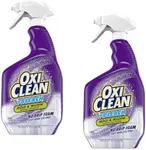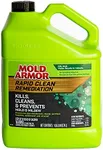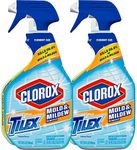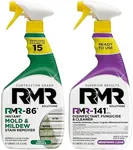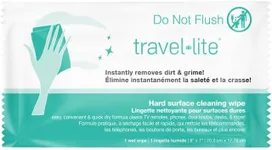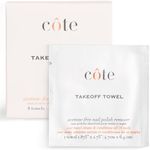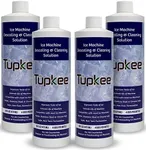Buying Guide for the Best Shower Mould Remover
Choosing the right shower mould remover is essential for maintaining a clean and healthy bathroom environment. Mould can be unsightly and harmful to your health, so it's important to select a product that effectively removes it while being safe for your surfaces and easy to use. Here are some key specifications to consider when picking a shower mould remover.Active IngredientsActive ingredients are the chemicals in the mould remover that do the actual work of killing and removing mould. Common active ingredients include bleach, hydrogen peroxide, and natural enzymes. Bleach is very effective but can be harsh on surfaces and emit strong fumes. Hydrogen peroxide is a good alternative that is less harsh and has no strong odor. Natural enzyme-based removers are eco-friendly and safe for most surfaces but may take longer to work. Choose an active ingredient based on your sensitivity to chemicals, the type of surface you are cleaning, and how quickly you need results.
Surface CompatibilitySurface compatibility refers to whether the mould remover is safe to use on the materials in your shower, such as tile, grout, glass, or plastic. Some removers can damage certain surfaces, so it's important to check the label to ensure the product is suitable for your shower. If you have delicate surfaces, look for a remover that is specifically formulated to be gentle yet effective. For more durable surfaces, a stronger formula may be appropriate.
Application MethodThe application method describes how the mould remover is applied to the affected area. Common methods include sprays, gels, and foams. Sprays are easy to apply and can cover large areas quickly, but they may not adhere well to vertical surfaces. Gels and foams stick better to surfaces, allowing the active ingredients to work longer, but they may require more effort to apply evenly. Consider how much mould you need to remove and the type of surfaces you are treating when choosing an application method.
Contact TimeContact time is the amount of time the mould remover needs to sit on the mould before it can be wiped or rinsed away. Shorter contact times are more convenient and can be effective for light mould, while longer contact times may be necessary for heavy infestations. If you have a busy schedule, a product with a shorter contact time may be more suitable. For severe mould problems, be prepared to use a product that requires a longer contact time for the best results.
Safety and FumesSafety and fumes refer to the potential health risks and odors associated with using the mould remover. Some products emit strong fumes that can be irritating to the eyes, nose, and throat, and may require good ventilation during use. Others are formulated to be low-odor and safer for use in enclosed spaces. If you are sensitive to strong smells or have respiratory issues, look for a mould remover that is labeled as low-fume or fume-free. Always follow the safety instructions on the label to protect yourself and others.
Environmental ImpactEnvironmental impact considers how the mould remover affects the environment. Some products contain harsh chemicals that can be harmful to aquatic life and the ecosystem. Eco-friendly mould removers use biodegradable ingredients that are less harmful to the environment. If you are environmentally conscious, look for products that are labeled as eco-friendly or biodegradable. These products are generally safer for both your home and the planet.

